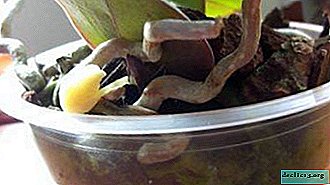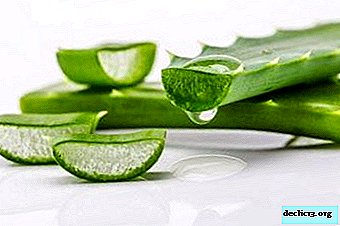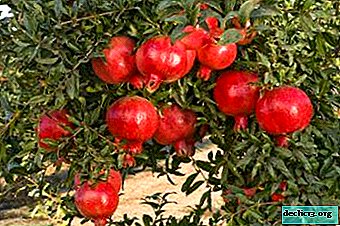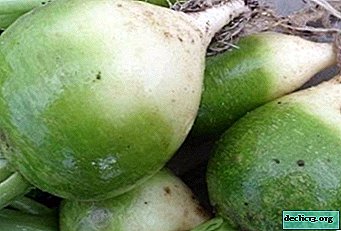What is Cumbria orchid and how to care for it?
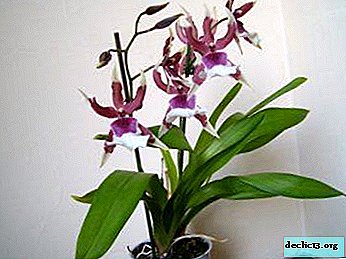
An orchid of any kind and species can become an adornment of your home, but you should pay special attention to Cumbria. After all, this artificial hybrid, in addition to blooming smartly, is very hardy and has good growth energy, so it is so well adapted to home living that there is practically nothing to compare it with. Breeders have worked wonderfully well.
You will learn how to care for this type of orchid, how to properly transplant and propagate in our article. Also watch a helpful video on the topic.
What it is?
You cannot meet this beautiful hybrid in nature, as it was bred artificially, especially for indoor floriculture. This is a sympodial orchid. Cumbria will correctly be called not a species, but an interspecific hybrid. And there are just such an incredible amount of hybrids, it is gratifying that they all easily adapt to the environment.
Photo
Next, you can see photos and names of the Cumbria orchid, as well as other types of flower:
Colmanara
Belara
Miltassia
Burrageara
Description
Characteristics of the appearance of Cumbria:
- From the ground, you can see slightly rounded pseudobulbs of oblong shape (they can grow up to 8 cm), they concentrate nutrients that help the plant survive in the extreme period.
- Long narrow leaves of dark green color, they can reach half a meter in length - they grow directly from a pseudobulb (2 or 3 sheets of one).
- The flowers are large, reach up to 10 cm in diameter, bright; the predominant colors: red, purple, brown, pink, burgundy, yellow, and each color has its own blotches; the shape of the flower itself is very diverse - it can be round, elongated, and even in the shape of a star; each pseudobulb can produce two peduncles.
History of occurrence
Cumbria first appeared in England over 100 years ago, in 1991 it was created by breeder Charles Velsteyke. To do this, he used the following types of orchids: Oncidium, Odontoglossum, Brassia and Miltonia.
ATTENTION: Remarkably, the “parents” transferred all their main positive qualities and features to a new look. The first successful example, of course, inspired the continuation of work, the creation of new hybrids. The name "Cumbria" was officially registered in the 20s of the last century.What is the difference from the rest of the species?
The main differences between the Cumbria orchid and other orchids:
- it has easily vulnerable thin roots, and other orchids have a very powerful root system;
- the presence of pseudobulbs;
- transparent pots are unacceptable to her, unlike others;
- its soil does not need to completely dry out between waterings.
Subcort
The most common varieties of Cumbria:
- Favorit - cherry with white color, bright spots on the upper petals, lower white color with a bright yellow “tongue” of flame in the middle.
- Plush - the lateral and upper petals are scarlet, the large lower petal is red to the middle, and then white.
- Eurostar - his flowers are like stars, bright crimson, a cream shade appears on the edges of the petals.
Bloom
Cumbria can bloom at any time of the year every 9 months, it lasts long enough, flowers can please 1.5 - 2 months.
Features of home care at different periods
 Before flowering - this is the period of the so-called "drying", that is, at this time the plant is not watered or watered very poorly.
Before flowering - this is the period of the so-called "drying", that is, at this time the plant is not watered or watered very poorly.
After flowering, our orchid needs increased attention, we must cut dry flower stalks, we continue watering in the usual mode for it, with fertilizers, until a new pseudobulb is formed.
As soon as it has formed, we immediately stop watering by 3 weeks. During this time (while the bulb is forming) flower stalks also have time to form, they will become visible at the very base of the pseudobulb.
What if there are no flowers?
If Cumbria does not want to bloom for more than a year, then most likely it suffers from excessive moisture or from an excessive amount of fertilizers, here first of all, you need to reduce watering during the formation of the pseudobulb, and after forming for several weeks, completely forget about watering and start again watering will only be necessary when peduncles of the axils of the leaves begin to be produced.
Step-by-step instruction: how to care?
Seat selection
You need to settle the plant, of course, on the window, windows of the east and south-east directions are well suited. If Cumbria bloomed in the winter, then it is necessary to produce additional illumination with a special phytolamp.
Substrate preparation
The soil should always be light, the best basis is the pine bark (fine granulation), pieces of charcoal and dry moss can already be added to it. Foam pieces are great as drainage.
Watch a video about making a substrate for orchids with your own hands:
Pot selection
As for the pot, it is better to choose a ceramic (unglazed) pot, because it is strong and reliable (to hold a large mass of the plant), the volume of the pot should not be very large.
Temperature and lighting
The most favorable: from 15 to 25 degrees, moreover, this orchid does not need night temperature drops, like the rest, that is, you need an average temperature regime.
There should be a lot of light, but not scorching sunlight, but diffused light.
Watering
 Only soft water (best filtered) should be used., and the watering itself should be submersible.
Only soft water (best filtered) should be used., and the watering itself should be submersible.
Water is poured into a wide container and a pot with a plant is placed so that water does not flood it from above, so that pseudobulbs do not get wet. Then (after 20 minutes) we remove the pot from the water and allow unnecessary water to drain from it through the drainage holes. The frequency of watering depends on the humidity of the environment (1 time per week or about 10 days).
There is no need for very high humidity, it is enough to maintain it at the level of 30 - 35%, it is useful to spray Cumbria, but not more than once or twice a week, excess moisture is not needed.
Watch a video about orchid watering rules:
Top dressing
Naturally, you can’t do without fertilizers, the best is a special complex for orchids, you need to make it during the period of growth of young leaves, laying buds and peduncles about twice a month, adding to the water when bathing or through a spray bottle.
Transfer
The most successful time for this is immediately after flowering, until their roots begin to grow on new sprouts. When transplanting, there is no need to rush to divide the bush into several, because the more pseudobulbs a plant has, the stronger it is, it is very important not to deepen the bulbs, they should be on top.
IMPORTANT: After planting, the plant should not be watered for a week so that the root system adapts.Watch the video on the Cumbria orchid transplant:
How to propagate?
Cumbria is usually propagated by dividing the bush., it is best to do this in spring, when the resting period ends and the active growth phase begins. It is quite possible to successfully combine the breeding procedure with a transplant, because it is also best to engage in reproduction after flowering. Let's look at the main steps:
- first soak the root system in water (by immersion) so that brittle roots are not damaged;
- we process tools with alcohol;
- remove corrupted (rotten) places;
- carefully divide the plant into 2-3 parts;
- places of damage and cut leaves are treated with carbon powder;
- we remove the old earth from the root and dry it;
- we plant plants in new soil.
Watch a video about the propagation of orchids by dividing the bush:
Diseases and Pests
 Diseases that can harm Cumbria are fungal and bacterial infections. You can help this way: remove the affected leaves and treat the whole plant well with fungicides. After this, it is necessary to transplant necessarily in a new pot with fresh soil.
Diseases that can harm Cumbria are fungal and bacterial infections. You can help this way: remove the affected leaves and treat the whole plant well with fungicides. After this, it is necessary to transplant necessarily in a new pot with fresh soil.
If the leaves of Cumbria suddenly turn yellow, then most likely it is standing under too bright light, rearrange it in a more comfortable place.
Of the pests, the most dangerous for our orchids are: aphids, spider mites, scale insects. As soon as you notice such “uninvited guests” on your flower, immediately isolate it from other plants. Next, it will have to be treated with insecticides or at least a thick solution of laundry soap.
Prevention of various problems
Everyone, of course, wants his plant to be always healthy and pleasing to the eye, and not cause unnecessary problems. And for this, you just need to provide proper care for Cambria in your home, this will be the best prevention of problems:
- do not overmoisten the soil;
- do not overfeed with fertilizer;
- provide sufficient lighting;
- maintain optimum humidity and temperature.
Conclusion
Well, to summarize - having examined in detail all the steps to care for Cumbria, we can say with confidence that it is imperative that at any opportunity you need to purchase this amazing plant for yourself. The complexity of home care and maintenance is minimal, but what is the degree of return - there are so many options for colors, shades, aromas, all this is especially cool in our offseason, when we lack bright colors so much.


